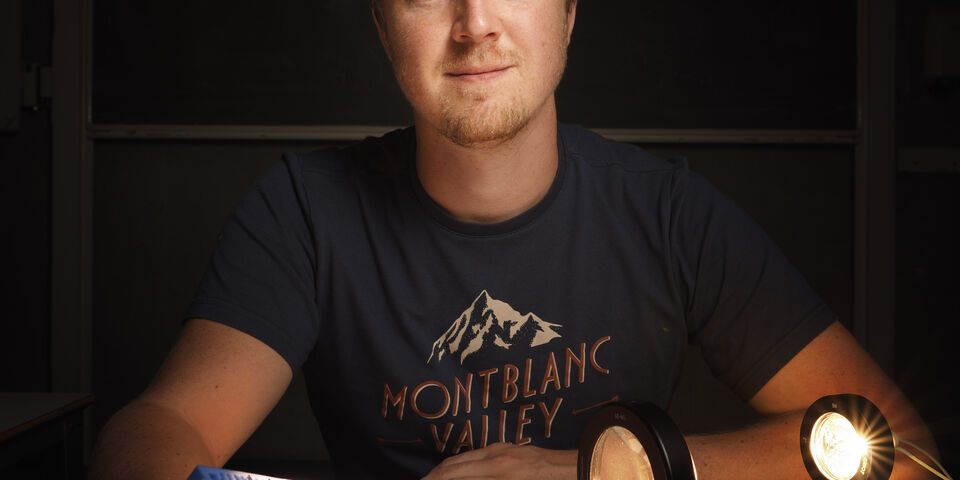Home Stretch | Solar ink without any drops
In order to make better ‘thin-film’ solar cells, you want to be able to see what happens exactly during the application of the photo-active layer. Using ingenious X-ray and optical technology, PhD candidate Hans van Franeker managed to make the formation of minuscule – and unwanted - droplets in plastic solar cells visible.
In principle you can make solar cells by simply applying a thin film of a special ‘ink’ on a substrate and equipping that whole with electrodes. However, there is still a very intense search going on for the optimal composition of this photo-active ‘plastic’ ink – inter alia at TU/e in the M2N group of Spinoza Prize winner René Janssen.
Hans van Franeker, who will before long obtain his PhD at M2N, explains that the inks for plastic solar cells in general contain two dissolved substances (polymers and fullerene), which need to be mixed in the right proportion in the final solar cell. An important danger is the formation of droplets, he says. “That formation occurs because the polymer has different interaction with the solvent than the fullerene; during the drying process, fullerene-rich drops are formed, which cause the two components to be unmixed.”
And that leads to solar cells that have a far lower efficiency, Van Franeker explains. “Total mixing is not good either, though; you want to be somewhere in the middle, where the polymers form fibers among which the fullerenes can find a place.” Only thus do you attain the optimum combination of photosensitivity and electric conduction which the scientists are trying to find. The final nanostructure of the solar cell turns out to depend strongly, as the PhD candidate adds, on the solvents that are used and the way in which the ink is applied onto the substrate.
Why does one substance work better than another?
The photo-electric layer is made via so-called spin coating; in this process the substrate is turning round, so that the ink is distributed evenly. It is customary for the resulting solar cells from the lab to be scrutinized only after the production process, says Van Franeker. “You test the materials on the basis of the final result: how well the solar cells that you can make in this way actually work. However, it means that you often still don’t know why one substance works better than another.”
Van Franeker, who studied physics in Utrecht before coming to Eindhoven for the Master Sustainable Energy Technology, therefore developed a measuring method that allowed him to study the nascent solar cell during the spin coating process. Hereby he looked at changes in the color of the solar cell, and at the reflection and scattering of X-rays and laser light. “In this way I’ve been able to show that with one solvent, drops are formed as soon as some twenty percent of the solvent has evaporated. However, if you add a small amount of a second solvent, a so-called co-solvent, then fibers will form even before that stage has been reached and you prevent the formation of droplets.”
That the addition of a co-solvent could work wonders for plastic solar cells was known already; thanks to the work done by Van Franeker it is now clear how that could happen. “This kind of in-situ measurements during manufacturing processes are not always simple, but I definitely think it is worthwhile making more use of them.”


Discussion